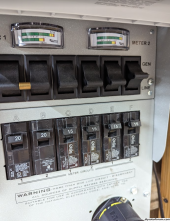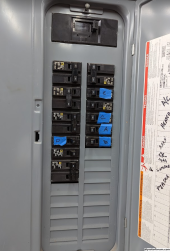The beauty of parallel systems (48v and 12v), is that the 12v system isn't pulling/supporting any huge loads, so it's componentry is small and dedicated to all the 12v loads that others have listed in this thread.
Many 12v loads in any typical RV setup, and having a parallel 12v system (with or without a 12v inverter) would support all that ... it's doing what 12v does best. Power cables are much smaller, because of small loads ...
The 48v system is doing what it does best, which is supporting huge loads ... keep everything logically together on the 48v side, or even physically together, if RV layout supports or accommodates it. Now your expensive cables are "short", running between battery-bank & inverter, and only the load cables have to go where the big loads are.
The 12v busbar, or bluesea systems' 12v distribution box, are great ideas to run directly off of a 12v battery-bank ...
Finally, you get some redundancy built in, as (unfortunately) the current crop of AIO's might tend to fail on you, and either the vendor or seller could leave you hanging for quite some time in getting repaired/replaced. Being able to run off of 12v, means not everything is dead if the 48v side craps out ...
It's personal choice, of course, but parallel and redundancy don't really prove their worth until you need them (at which point it's too late if you don't have them), so you've got to plan this stuff in ...





